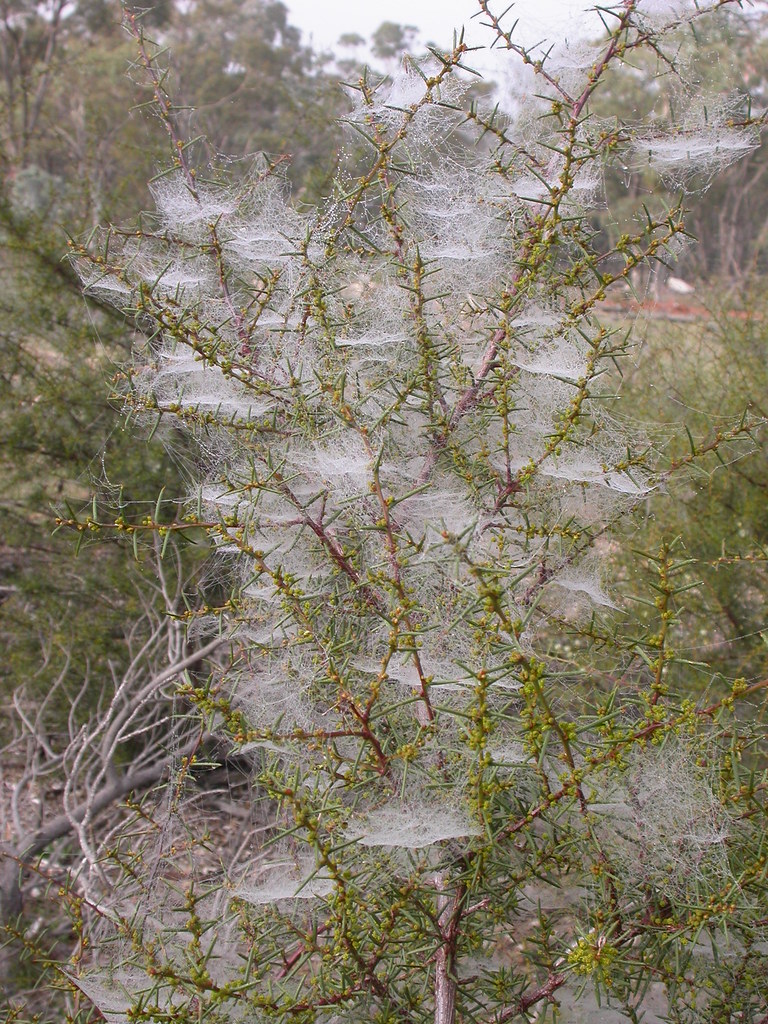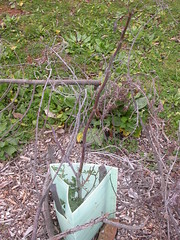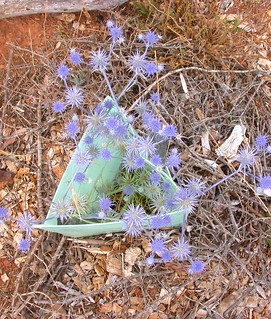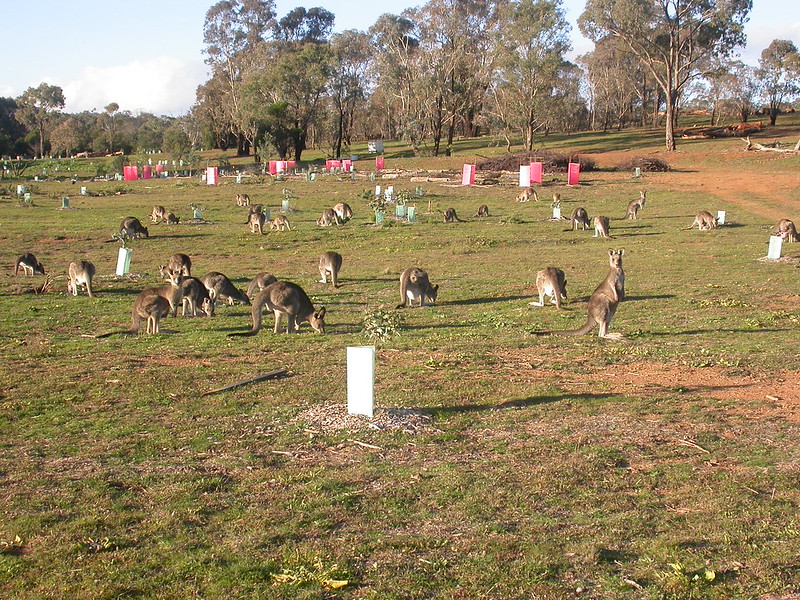
Early Wattle, Acacia genistifolia wrapped in spider webs on a winter morning (W.Pix). The wattle is a key habitat species planted at The Fair.
Give native plants a head start! Come and help preparing National Tree Day 2017.
When: Sunday, 16 July, 1-4pm; give as little or as much time as you want.
Where: Meet at The Fair, nature park access Tay St, North Watson, view this map
What: Preparation for National Tree Day 2017.
Bring: Sun protection, long sleeves and pants; garden gloves if you have them. Tools and hot drinks will be provided.
No previous experience required, just an interest in making a difference!
Inquiries: projects@majura.org or 6247 7515
Assisted regeneration of native diversity. About planting at The Fair.
The site adjacent to the The Fair is one of the four modified and heavily degraded areas in the nature reserve where the Friends of Mt Majura (FoMM) run long term projects to reclaim and improve grassy woodland (other sites are the old sheep camp at Majura ridge, Majura paddock east of Rivett Street and the associated drainage line at the lower Hackett water tank, and a cleared section of the west slope). These sites have in common that much of the original vegetation was cleared and replaced by weeds. In addition ongoing overgrazing prevents natural regeneration which in turn benefits the weeds. Other issues are the loss of the surface crust that holds the top soil together, compaction of soil, and erosion and loss of topsoil which affects the ability of plants to establish.

The Fair project site in April 2014; view to the south (W. Pix)
As with all FoMM projects, work at The Fair began with an initial assessment in 2011/12, taking into account present introduced and native plants, the impact of rabbit and kangaroo grazing, the soil condition such as compaction, large bare areas, active erosion, and the lack of structural habitat elements such as fallen trees and logs.
We started treatment of weeds in 2012 at the least weed infested southern part of The Fair project site, removed large Briar Roses in the tree cleared area and conducted a mass planting on National Tree Day. Work continued in the past years and included collecting seeds of native ground cover plants on Mt Majura and direct seeding, tube stock planting of native shrubs and grassland forbs on National Tree Days, measures to protect the plantings against grazing damage, help with rabbit control and the reintroduction of structural habitat, many hours of weed control, and monitoring weeds, rabbits, signs of natural regeneration and the progress of assisted re-vegetation, and work to improve the compacted soil and control erosion.

Silver wattle, Acacia dealbata planted @ The Fair and damaged by grazing (W. Pix)
A great challenge is to replace woody and herbaceous weeds with local native plants under the present grazing pressure without compromising ecological values of the area such as wildlife habitat.
For instance Hawthorn, Briar Rose and other woody weeds that replaced the native shrubs in the area provided shelter for little woodland birds however on the other hand the weeds prevented native vegetation to re-establish and thrive. Our solution was to plant local native shrubs that provide the similar habitat value in a staged process, superseding and accompanying the removal of these woody weeds.

Blue Devil, Eryngium ovium planted @ The Fair. The species is intolerant of heavy grazing when the young leaves appear in spring (W. Pix)
Seeds of many grassy woodland species do not persist in the soil seed bank and are unable to re-establish without assistance once they are lost from the standing vegetation through clearing, weed competition and overgrazing. We planted, and continue to plant, clumps of native understorey species at strategic sites and hope that the seeds of these “living seed banks” will spread out and one day will take-over sites which are currently weed infested.
The staged process of weed removal, assisted re-vegetation (tube stock planting and direct seeding) and protecting the plantings from being grazed is a much valued contribution of volunteers, and supported by the Canberra Ornithologists Group and the authorities charged with the management of conservation areas in the ACT such as the Mt Majura nature reserve.
The re-establishment of diversity improves the integrity of the grassy woodland and the drainage lines. It is a long term process and hard work and it is only sustainable if Government backs up our efforts and manages the grazing pressure that detrimentally impacts upon the grassy woodland and the native species within this endangered ecological community.

Establishing native plants under heavy grazing pressure is a challenge @ The Fair. Native grass fails to flower and set seeds and will be replaced by introduced species if overgrazing continues at the current rate (W. Pix 28.04.2014).


